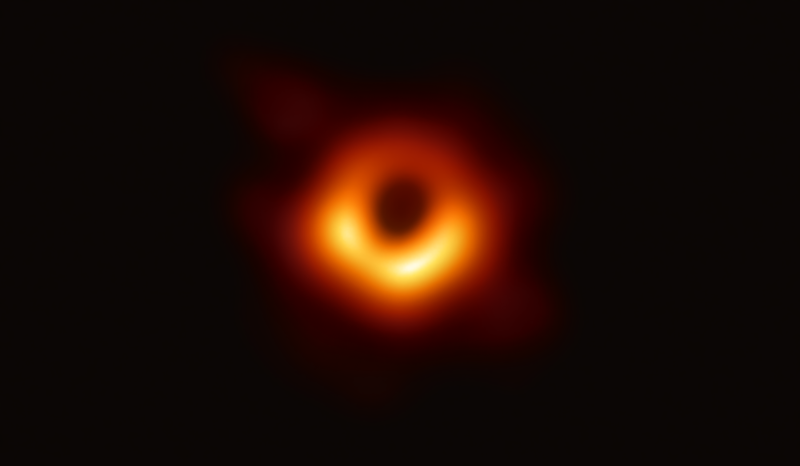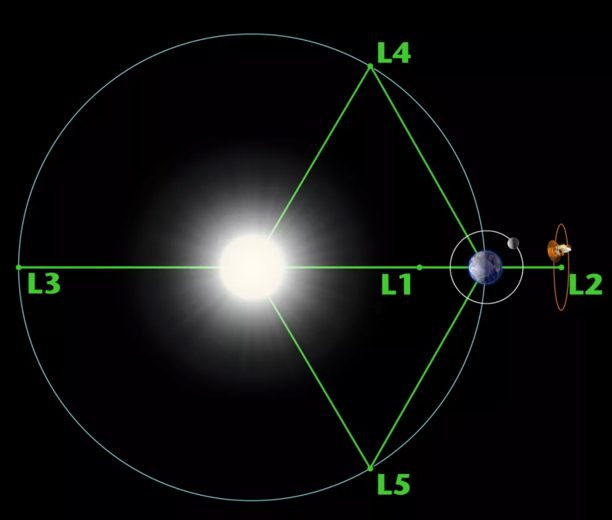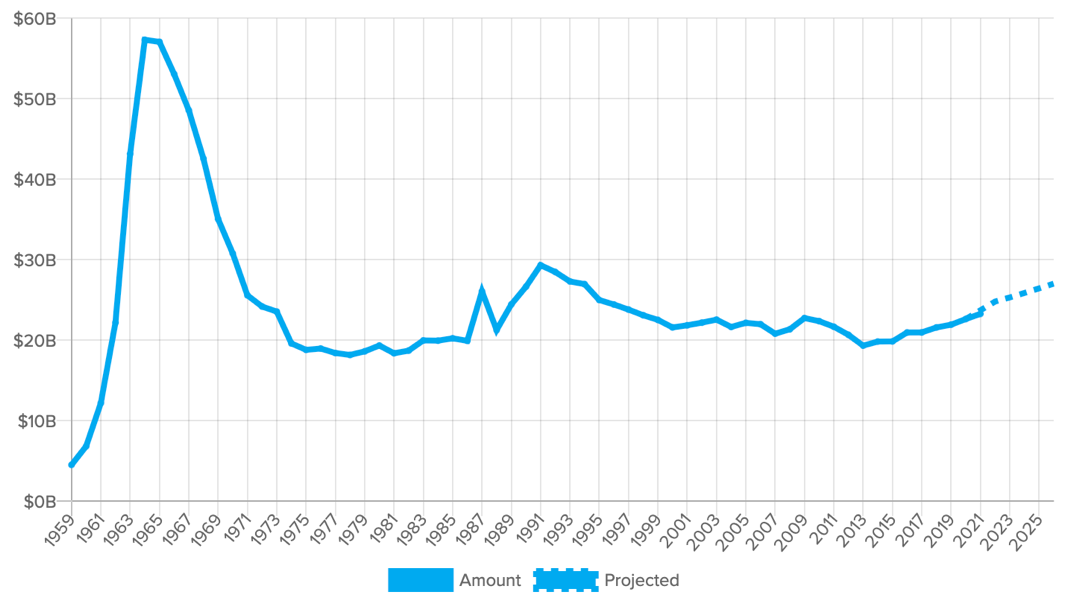Mission Statement
The Milky Way Galaxy has not been fully explored, and its vast expanses may hold incredible discoveries that could radically advance space science. For this reason, the next mission is to take place in the next year and is proposed to study a black hole inside the constellation of Sagittarius A*. Which, according to all theoretical calculations, should form the center of the entire galaxy. This supermassive black hole is crucial to studying the history of the Milky Way formation, which means that by researching its properties, it becomes possible to understand our origin. However, due to the apparent technical difficulty and the long-range location of the object, only observational missions from Earth, backed by superpowered space telescopes, are acceptable at this time. The total duration of the project, including the improvement of observing systems, construction of the station, transportation to the Lagrange point, and obtaining the first results, will take at least 4-7 years (the first launch cannot take place until 2025 when the station construction project is completed).
Object of Study
Few phenomena intrigue the human mind as much as the supermassive black holes located at the center of various galaxies throughout the Universe. The black hole itself is a mysterious and challenging fact for the average person to understand. Regions of space-time, whose gravitational attraction dramatically exceeds the potential ability of objects to choose beyond its limits even when reaching the speed of light, seem to be fantastic. Such statements are also factual for photons of light, so space objects are called black objects, confirming the impossibility of light to escape beyond a hole. Moreover, the achievement by such an object of dimensions of 105-1011 solar masses seems impossible at all. At the same time, classical astronomy says the opposite, indicating not only the unconditional fact of the existence of such black holes but also their fundamental function for the formation of galaxies.
Primarily it should be understood that there are several difficulties for the study of black holes. Therefore, the impossibility of close physical study, absence of light illumination for observation, and distance of location create specific difficulties for obtaining reliable knowledge about properties and essences of supermassive black holes. For this reason, humanity can build working hypotheses only on fragments of information received to the current moment by means of telescopic observations. One of the most common and most reliably confirmed hypotheses points to the evolutionary origin of black holes (Kruijssen et al., 2019). Massive stars, as they evolve, gradually collapse due to a reduction in the intensity of thermonuclear reactions and cool down, which causes the formation of a hole in space-time. Exactly this hypothesis explains the statistical multiplicity of supermassive black holes throughout the Universe. At the same time, the hypothesis explains the compactness, density, and contraction of black holes formed at the imbalance of gravitational forces and expansion in a dying star. During sequential accretion of stellar matter on a basic black hole, the formation of a supermassive object apparently takes place.
Such a small but monstrously gravitationally powerful celestial body naturally forms complex planetary systems around itself. The supermassive Sagittarius A* black hole forms the center of the Milky Way spiral galaxy (Issaoun et al., 2019). Little knowledge is currently available about this hole, but it is its study that is fundamental to understanding the origins not only of the Solar System and the Universe but also of humanity. It is known that the mass of Sagittarius A* exceeds the mass of the Sun by four million times, but the density of black matter is 100 times higher than the density of lead (Marín, 2020). At the same time, neither the mechanisms of the formation of Sagittarius A*, nor its age, nor even the effective diameter of the hole itself is still unclear. It is understood that the initiation of a program to study this object will give humankind new knowledge and significantly advance space science towards progress. By determining the properties of the black hole and understanding the essence of its origin, it will be possible to extrapolate the results to other similar objects and eventually obtain convincing evidence for the origin of the Universe, which is the most important existential question of all time.
Equipment Requirements
The only available way to study supermassive black holes at the moment is through telescopic observations to determine the mass and/or size of the object in order to compare them with the reference gravitational radius given by the Schwarzschild equation: Eq. [1]. Obviously, the telescope used must have a high resolving power. At the same time as the current moment, any photographs of black holes turn out to be primarily fuzzy and of low quality, as, for example, it is shown in Figure 1. At the same time, any meaningful images can be obtained only in the implementation of a comprehensive observation, provided that several telescopes are combined in an interferometer with an ultra-long baseline. As a result, there is a huge gap between scientific expectations and the current progress in the development of cosmological technology. For this reason, when choosing the technical component of this project, it was necessary to stop at the most powerful telescope networks, and in particular, the ACT.
Rg=2GM/c² Eq. [1]

ACT refers to the six-meter-high Atacama Cosmological Telescope, located in northern Chile’s desert of the same name. ACT, one of the highest terrestrial telescopes in existence, is 5,190 meters above sea level at a telescope height of 12 meters (Swetz, 2010). Technical characteristics of the optical component of the machine are shown in Figure 2. It is based on the detection of relic radiation, which is known to include ionizing radiation that persists during the formation of accretion disks from massive black holes (Sherwin et al., 2017). In other words, ACT can with sufficient — but not yet perfect — resolution, collect data on the isotropy of relic radiation in the microwave wave range, which means it is appropriate to use it for the purpose of observing Sagittarius A*.

Using this telescope to observe a supermassive black hole at the center of the Milky Way is critical. However, the novelty of the proposed project involves an attempt to change the location of ACT from a desert in Chile to an orbiting Lagrangian point. To be more precise, in particular geography of the solar system, there is a situation in which the gravitational attraction of the Sun as the center of the system is compensated by the Earth’s gravitational force. As a result, at this point, called the libration point or Lagrange point, the placed body does not experience any displacement pressure, and therefore the telescope located there will be in a conservatively stable state for a long time. Thus, in the Sun-Earth system, the physical geometry defines several such points, but for the ACT placement, the point L2 seems the most appropriate: thus, the choice of L2 is due to several reasons. First, the Earth shield almost wholly covers the placed object from solar radiation. Second, it is the most studied Lagrangian point, which at one time hosted several orbital radio telescopes. Third, the use of L2 can cover the provision of a satellite signal to objects placed on the backside of the Moon, which has promise for the creation of intermediate stations. Finally, L2 could be used as an intermediate refueling station for Earth-to-Moon cargo transports. Ultimately, placing ACT on the L2 point seems like a highly defensible strategy.

The actual need to place ACT in the Earth’s orbital space was also justified for several reasons. The most obvious is that orbiting telescopes do not experience the blurring distortion of the Earth’s orbit. Another reason follows from this: the Earth’s atmosphere can create optical effects of absorption or reflection of some of the wavelengths, which is especially relevant for weak, low-intensity radiations from distant objects. Placing ACT at the Lagrangian point L2 will inhibit the unwanted effects and thus optimize the observation of Sagittarius A*.
The Technology Used
A surprising property of supermassive black holes that is critical to study with ACT has not been discussed previously. More specifically, it refers to the presence of solid radiation in the radio wave range up to 3 THz (Storchi-Bergmann & Schnorr-Müller, 2019). Being celestial bodies, massive black holes with radio emission represent the most energetic processes throughout the Universe, and therefore it becomes possible to study them only with radio telescopes, which is what ACT is. It should be repeated that light passing through the abstract event horizon cannot return back, which means that photons are lost without a trace in the matter of a massive black hole. Thus light, not penetrating inside, but being near the object, is inevitably bent under the influence of solid gravitational waves according to Einstein’s general theory of relativity. Such a phenomenon generates the effect of gravitational lensing, which consists of the duplication of the same object on the celestial vault when observed (Wiesner et al., 2012). It is important to emphasize that gravitational lensing is not referred to as a working laboratory tool but as a cosmic object whose presence distorts the true path of photons from the observing object.
In fact, gravitational lensing allows the object to be observed more than twice or in a completely distorted form, which has been repeatedly observed by researchers. Studies of the galaxy cluster SDSS J1038+4849 with the Hubble Telescope and H1429-0028 with the Herschel Telescope have shown that gravitational lensing produces the characteristic Einstein rings (Wiesner et al., 2012; Messias et al., 2019). It is noteworthy that due to the distortion of the light path, the optical information about the object reaches the observer slower than if this effect did not exist. For this reason, researchers need to consider all the assumptions that arise when using ground-based long-range radio telescopes. This effect, although it creates false ideas about the structure of the Universe, with proper correction, allows studying even the darkest objects in the galaxy, including Sagittarius A*.
For massive black holes, it is also relevant to study their feeding processes, in which holes absorb surrounding matter and release energy bursts, called jets. The cause of jets, or relativistic jets, is often considered to be the interaction of the magnetic fields of space objects with the accretion disk around the black hole. To form plasma jets, a black hole constantly absorbs surrounding matter, as a result of which its mass naturally increases. This matter includes clouds of gas and dust and a halo. However, if possible, a massive black hole can absorb planets, planetary systems, and galaxies. At the same time, there is a darkening of the black hole’s core, which may complicate its study. The described processes should be taken into account by researchers during radio telescopic observation of a massive black hole.
Duration of Observation
When discussing the technical regulations of this project, it should be stressed in advance the potential for modification of the primary plan created due to circumstances beyond the control of the research team. As already discussed, massive black holes are dynamic formations in the Universe, and their study requires a comprehensive approach. Ordinary observation of a hole directly cannot be achieved for obvious reasons, so the working group needs to use all assumptions, including desirable and undesirable effects associated with cosmological observation. In addition, the project itself is multitasking and requires all steps, from designing and running ACT on L2 to collecting and analyzing the first results, to be completed in sequence. Therefore, the fuzzy range of time needed to implement the current project is 4 to 7 years, with the possibility of extending indefinitely.
It should be specified which figures make up the final term of the study. Development of a strategic plan, construction of the station, and preparation for transportation when borrowing experience from existing technologies will require no more than two years of intensive work. At the same time, transporting the ACT to the L2 point will take about thirty days, and the same amount of time will be required for the remote equipment setup and test run. It is also worth realizing that Sagittarius A* is 26000 light-years away from Earth (Marín, 2020). Observing the relic radiation from this black hole will not take long, although there will be a severe delay caused by the duration of the motion of light photons from the borders of Sagittarius A* to L2. Data are proposed to be collected for at least three years from the initial launch of the orbiting ACT, with intermediate results published periodically, as Hubble or ALMA do. It is assumed that this time should be sufficient to collect sufficient data and to keep the technical components operational.
That said, if the intermediate results and final output prove helpful and informative for more in-depth research — in other words, if the academic component pays off — it is acceptable to extend the orbiting ACT. More specifically, this would require periodic cargo transports to L2 to provide upgrades to the device and make repairs if needed. In such a case, the timing of the project will be reviewed individually, but it is expected that over time the orbital ACT will lose its relevance due to the emergence of better, more accurate, and sensitive radio telescope networks.
Total Costs
The financial component of the project is the biggest question for the implementation of the entire study. It is assumed that the money will either come from a government subsidy or will be raised through private investment, but in either case, determining the source of funding is not a question of this paper. What is essential is that enormous sums will be required to design the ACT orbiting radio telescope with existing technology and move it to the Lagrange point. Costs relevant to similar projects will be used to be specific. For example, the construction of the James Webb Orbiting Telescope, which has a goal of reaching L2 in 2021, was $9.7 billion (Russell, 2021). The Herschel Space Observatory, which has very different specifications but is placed at L2, cost a budget of $1.4 billion (NASA, 2020). Although each project’s financial plan is calculated individually, this short meta-analysis provides a rough framework.
In addition to the construction, transportation of the orbiting ACT to the L2 point, support, maintenance, and repair will be a serious expense. Notably, NASA’s statistical analysis demonstrated the economic unprofitability of projects at L1 and L2, but it makes sense in the scientific field (Lasky, 2017). That said, an essential finding of Lasky (2017) is the need for private space projects to collaborate with NASA to reduce the financial burden and accelerate the launch and data collection processes. Nor should one forget about personnel costs, without which the use of the orbital ACT proves impossible. For example, the company’s budget for the fiscal year 2021 was $23.246.0 billion (Figure 4), of which, according to some data, about 10% was given to employee salaries (NASA, 2021; Your guide to NASA’s budget, n.d.). Thus, taking into account the specified information, the direct cost of the specified project on Sagittarius A* research will be not less than $10.0 billion, subject to budget expansion on the need to expand the scope of the project.

Conclusion
In conclusion, it should be noted the critical importance of the proposed study. The construction of an orbiting ACT located at the L2 point will reduce the number of unwanted effects from the Earth’s atmosphere and obtain better radio data from Sagittarius A*. Studying a real black hole located at the center of the Milky Way using relict radiation will allow understanding the mechanisms of supermassive black holes better and potentially answer existential questions about the origin of the universe.
References
Howell, E. (2017). Lagrange points: Parking places in space. Space.
Issaoun, S., Johnson, M. D., Blackburn, L., Brinkerink, C. D., Mościbrodzka, M., Chael, A.,… & Zhao, G. Y. (2019). The size, shape, and scattering of Sagittarius A* at 86 GHz: first VLBI with ALMA. The Astrophysical Journal, 871(1), 1-17.
Kruijssen, J. D., Pfeffer, J. L., Reina-Campos, M., Crain, R. A., & Bastian, N. (2019). The formation and assembly history of the Milky Way revealed by its globular cluster population. Monthly Notices of the Royal Astronomical Society, 486(3), 3180-3202.
Landau, E. (2019). Black hole image makes history; NASA telescopes coordinated observations. NASA.
Lasky, M. (2017). L1, L2 Missions: Earth-orbiting or Planetary [PDF document].
Marín, C. (2020). Spin contribution to the perihelion precession in binary systems like OJ287: higher order corrections [PDF document].
Messias, H., Nagar, N., Zhang, Z. Y., Oteo, I., Dye, S., Ibar, E.,… & Yang, C. (2019). The molecular gas properties in the gravitationally lensed merger HATLAS J142935. 3–002836. Monthly Notices of the Royal Astronomical Society, 486(2), 2366-2378.
NASA. (2020). NASA’s management of the stratospheric observatory for infrared astronomy program [PDF document].
NASA. (2021). FY 2021 budget estimates [PDF document].
Russell, W. (2021). James Webb space telescope. GAO 100.
Sherwin, B. D., Van Engelen, A., Sehgal, N., Madhavacheril, M., Addison, G. E., Aiola, S.,… & Wollack, E. J. (2017). Two-season Atacama Cosmology Telescope polarimeter lensing power spectrum. Physical Review D, 95(12), 1-17.
Storchi-Bergmann, T., & Schnorr-Müller, A. (2019). Observational constraints on the feeding of supermassive black holes. Nature Astronomy, 3(1), 48-61.
Swetz, D. S., Ade, P. A. R., Amiri, M., Appel, J. W., Battistelli, E. S., Burger, B.,… & Zhao, Y. (2010). The atacama cosmology telescope: The receiver and instrumentation [PDF document].
Wiesner, M. P., Lin, H., Allam, S. S., Annis, J., Buckley-Geer, E. J., Diehl, H. T.,… & Tucker, D. (2012). The Sloan Bright Arcs Survey: Ten Strong Gravitational Lensing Clusters and Evidence of Overconcentration. The Astrophysical Journal, 761(1), 1-13.
Your guide to NASA’s budget. (n.d.). Planetary.